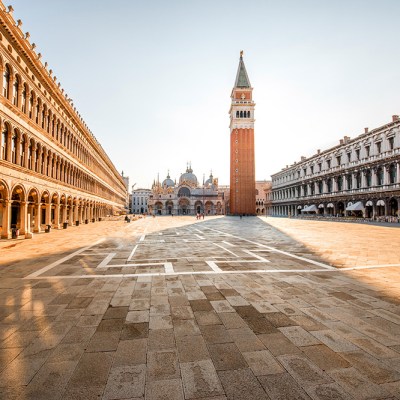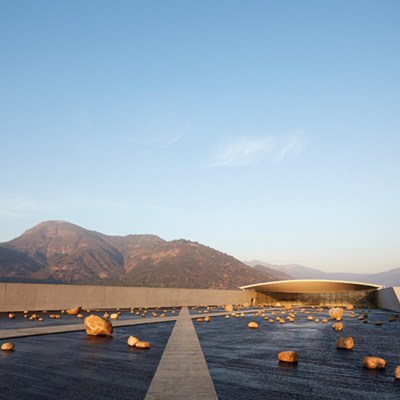From the January 2023 issue of Apollo. Preview and subscribe here.
The wines of the Veneto – Prosecco, Soave and Valpolicella among them – are no secret. Less well known, however, are the wines produced within the city of Venice itself. Winemaking has been carried on in the archipelago of islands that constitute Venice for more than 2,500 years; until around 1100, there were even vineyards in the Piazza San Marco. The Napoleonic land registry of 1812 measured 300 hectares of vineyards throughout the lagoon.
Under the Venetian Republic, wine was imported from the Greek Islands and the eastern Mediterranean more widely. Venice expanded its territory into surrounding lands in the early 1420s and, soon enough, the city’s merchant classes commissioned summer residences with vineyards across the Veneto region; winemaking accompanied this. By the early 13th century the artisans of the island of Murano were developing glass for the consumption of wine, replacing earthenware vessels.
Though it seems counterintuitive to cultivate vines on shallow swampland prone to flooding by saltwater, Venice is not short of ingenuity. Stressed vines fighting for nutrients make for better grapes, and so production flourished. The great flood of 1966 damaged much farmland and many vines were lost. Today, traces of vineyards remain in religious sites, protected by walls and by the zeal of their caretakers.
The church of San Francesco della Vigna in Castello was built in the 13th century on land that used to be a vineyard. The doge Andrea Gritti financed the rebuilding of the church in 1534, and commissioned Jacopo Sansovino, who worked in conjunction with the Franciscan monk Francesco Zorzi on the airy style, designing the new church in proportions that conformed to Pythagorean numerology and Kabbalistic musical philosophy, and to the Hermetic aspiration to represent the harmony of the universe. The facade of the church was designed by Andrea Palladio.
The vineyards enclosed by the cloisters of San Francesco were purchased in 2019 by the Santa Margherita winery, which began to work with the monks to redevelop the grapes, reintroducing past varietals and collecting rainwater to irrigate the rows. Only 1,000 bottles of the wine, named Harmonia Mundi, are produced a year – and the proceeds fund students at the Institute of Ecumenical Studies in the complex and the restoration of the Chapel of San Marco.
In the district of Cannaregio, next to the Santa Lucia railway station, stands the church of Santa Maria di Nazareth, the home in Venice of the Discalced Carmelites since they purchased the land in 1649. Inside the church – designed by Baldassare Longhena, with a facade by Giuseppe Sardi – are two frescoes by Tiepolo, one depicting the order’s patron saint, Teresa of Ávila, the other Christ in the Garden of Gethsemane. These themes are echoed outside in the walled garden and vineyard of the church, which is designed and planted in accordance with elements of Christian numerology, focusing on the number seven, inspired by the visionary writings of Saint Teresa.
The Venice Wine Consortium, which represents traditional winemakers in the city, restarted grape cultivation in the gardens in 2010, focusing on 17 indigenous varieties to preserve the biodiversity of lagoon flora, as well as Armenian and Holy Land varietals. The friary’s red wine, Prandium, uses grapes such as Raboso, Marzemino, Turchetta and Recantina. Ad Mensam, the white wine, is selected from local grapes including Verduzzo Trevigiano, Glera, Grapariol and Malvasia. Production is small, around 900 bottles a year, only available directly from the friary.
The same enthusiasm for preserving knowledge can be found around a 35-minute ferry ride away, on Mazzorbo. This small island in the north of the lagoon also featured in the Napoleonic survey, which attributed it with 31.6 hectares of ‘arable land, vineyard and fruit orchards’. In 2002 Gianluca Bisol – of the Bisol winemaking dynasty – discovered an unfamiliar grape variety in the garden of the seventh-century basilica of Santa Maria Assunta on the nearby island of Torcello: the Dorona di Venezia, a varietal specific to the lagoon and extremely rare. This uva d’oro (golden grape) was favoured by Venetian noblemen and doges, but cultivation dwindled when disease and economics altered the region’s winemaking, and it was almost wiped out in 1966.
The Bisol family planted 4,000 Dorona vines on the Scarpa-Volo estate, an abandoned Benedictine monastery on Mazzorbo, enlisting the oenologist Roberto Cipresso to develop wines that capture expressions of lagoon terroir: white peach, honey, wormwood and salt. Each of the 4,000 bottles produced every year is hand-numbered with a gold-leaf label, and they can be bought only on site.
These projects are not so much regenerating as upholding Venice’s grand traditions: in a city long renowned for commerce and industry, as well as pleasure and beauty, these ancient vineyards have deep roots.
From the January 2023 issue of Apollo. Preview and subscribe here.


